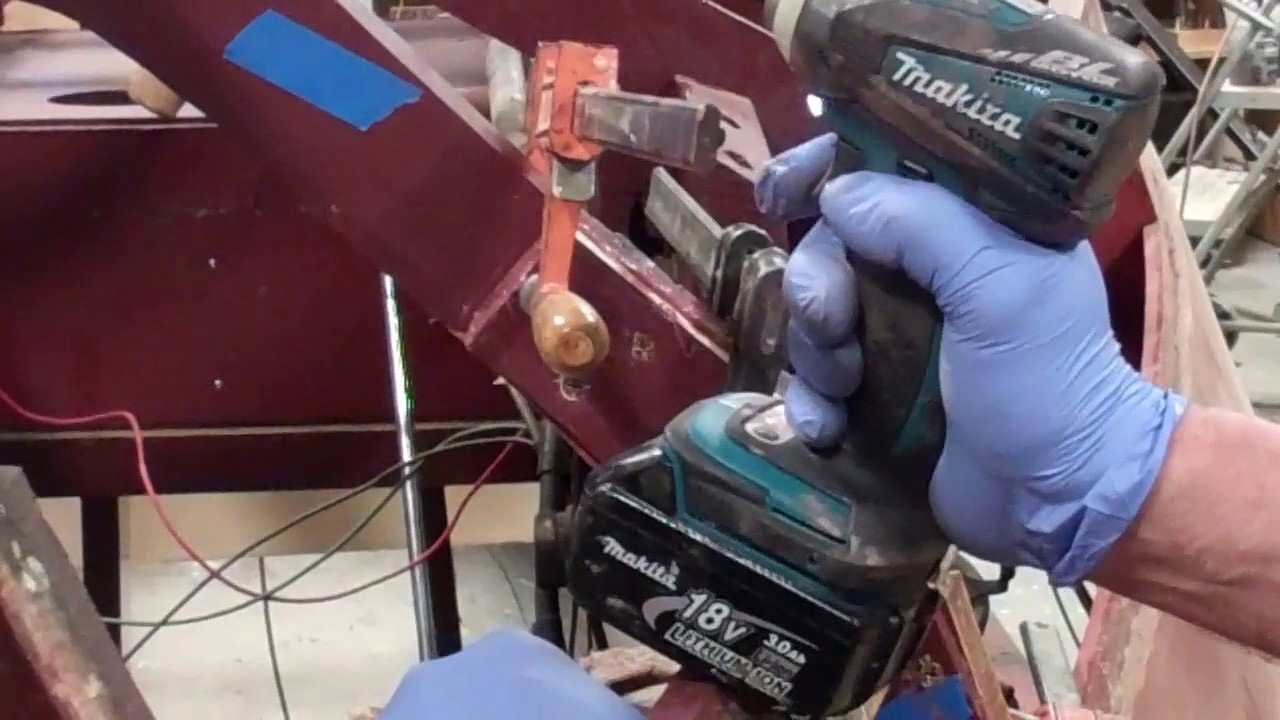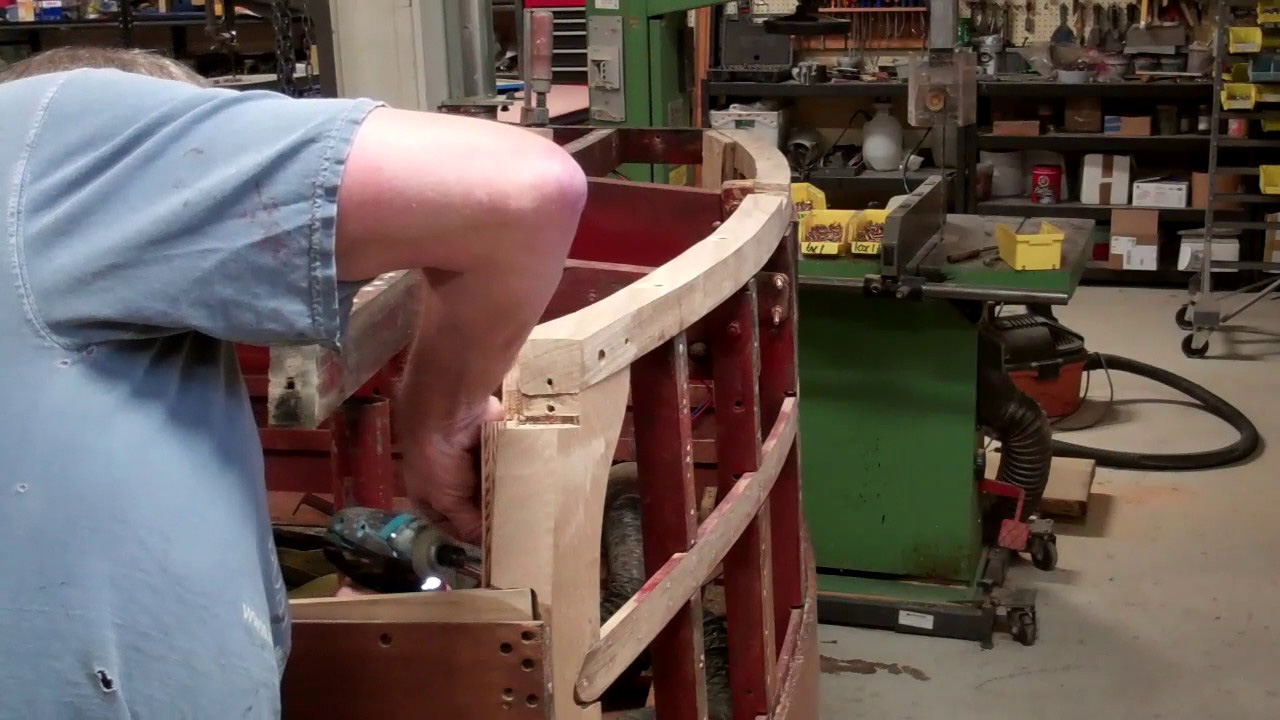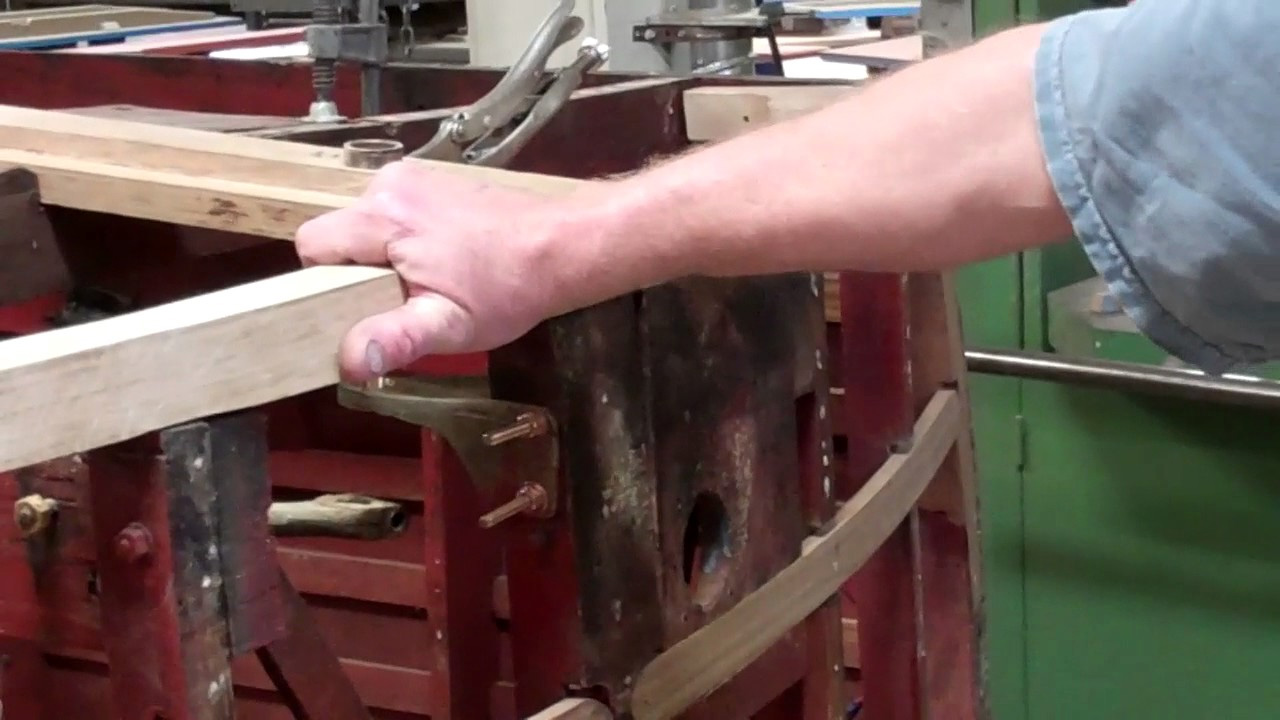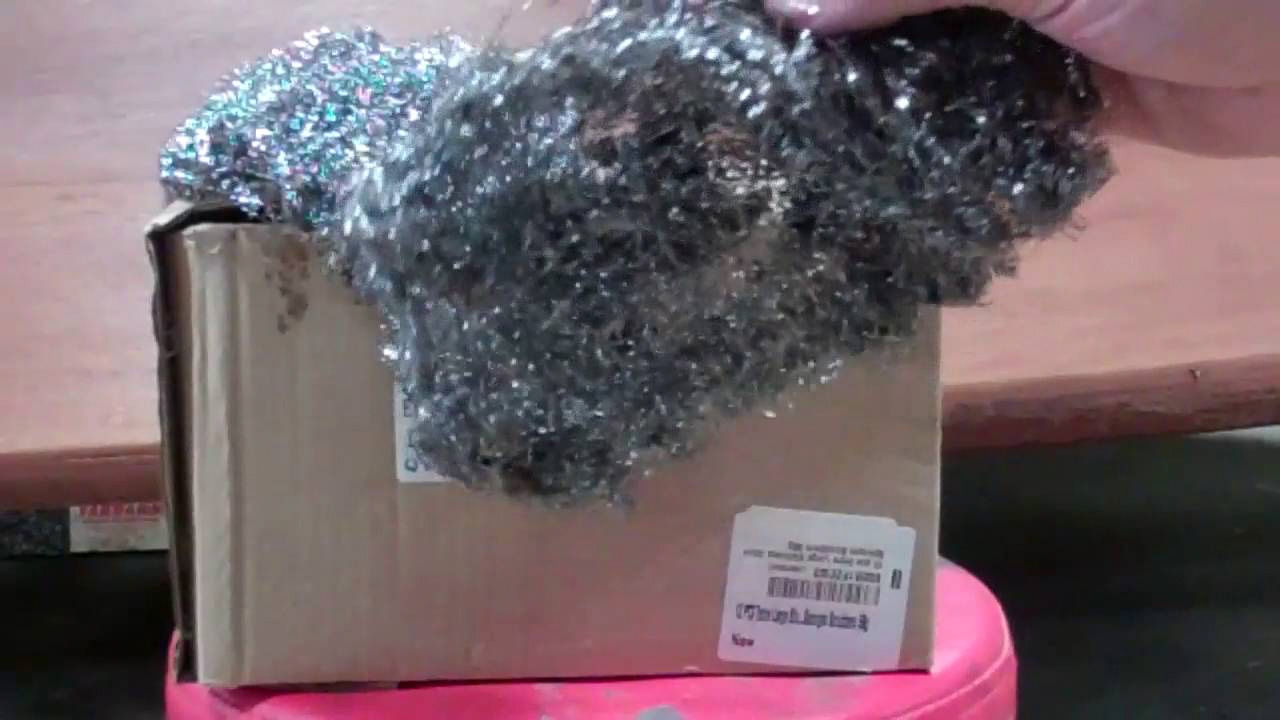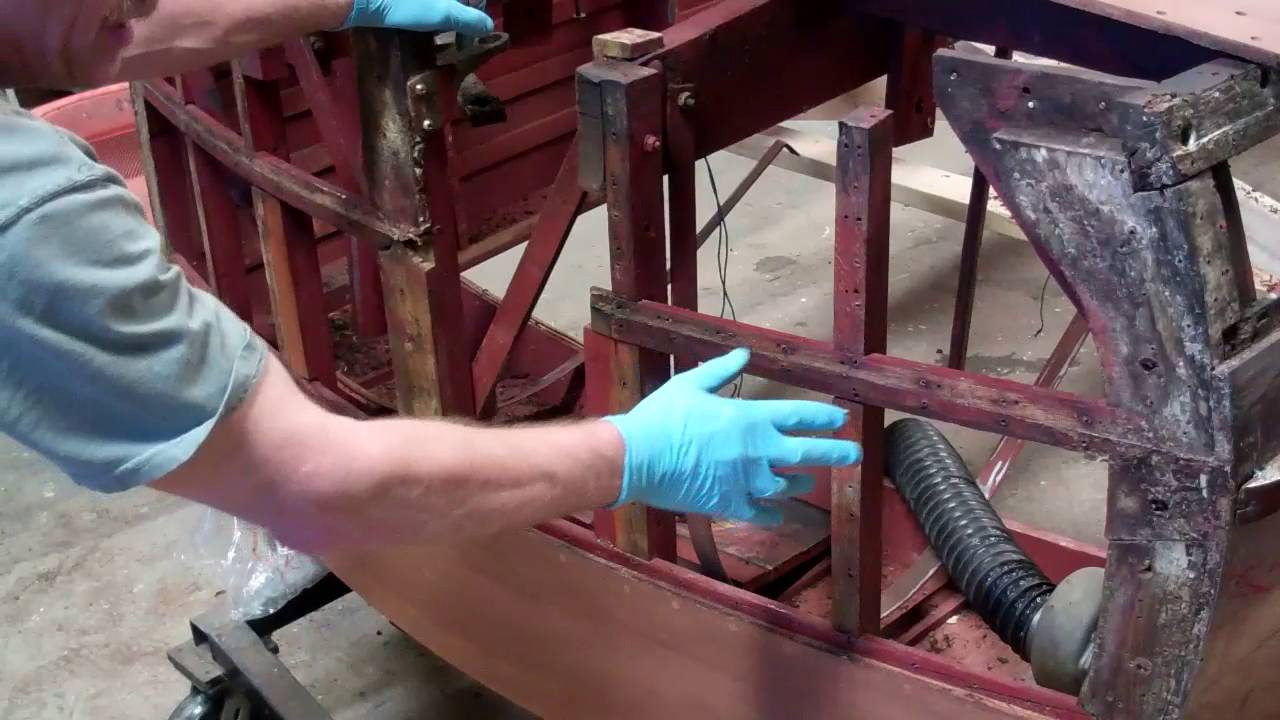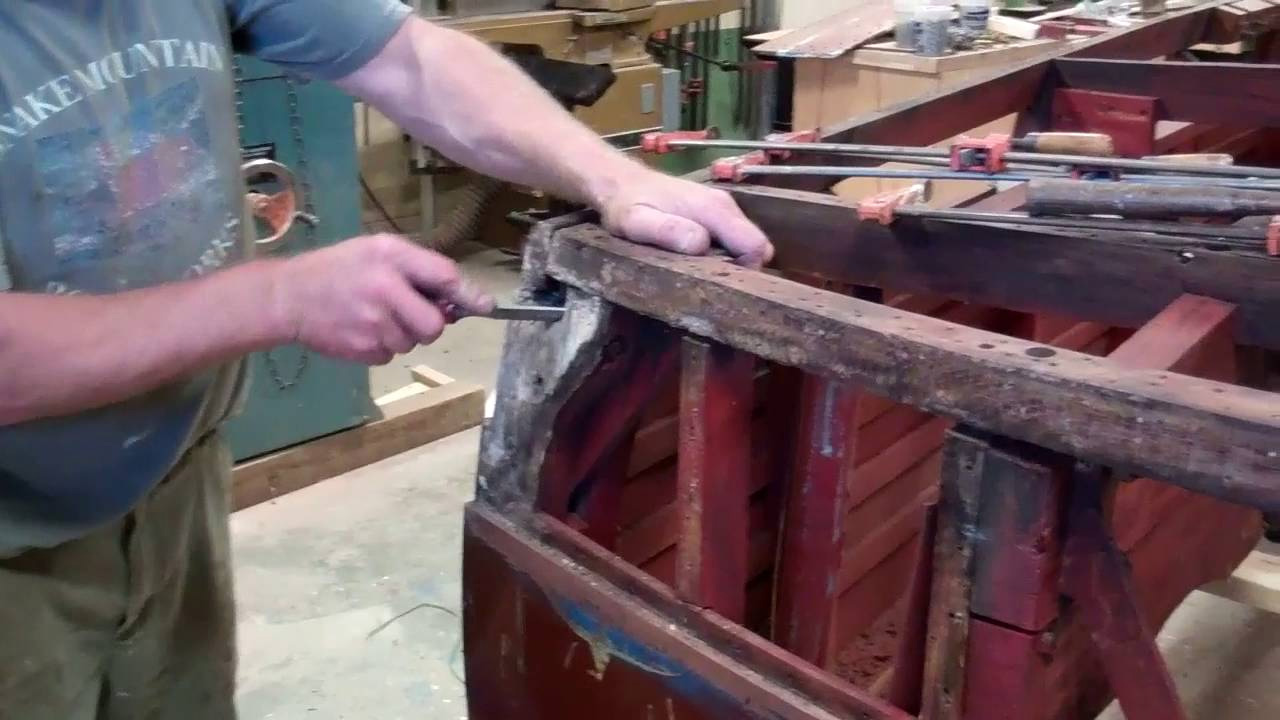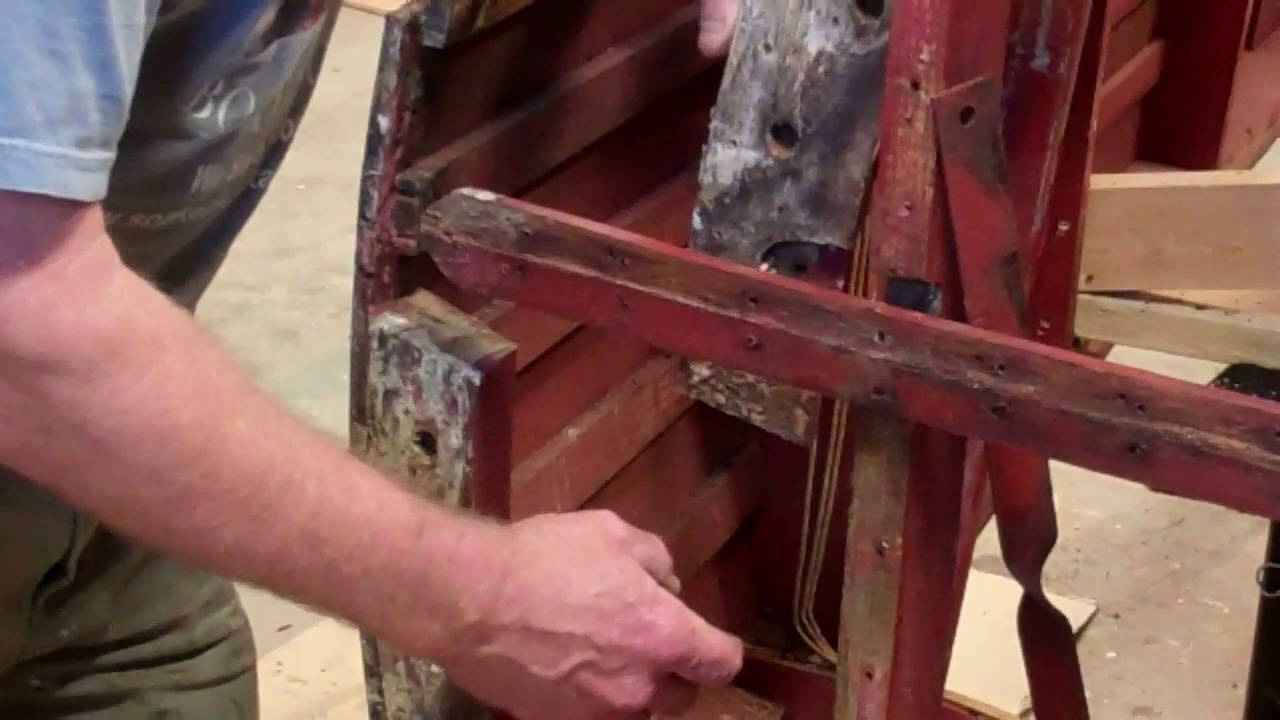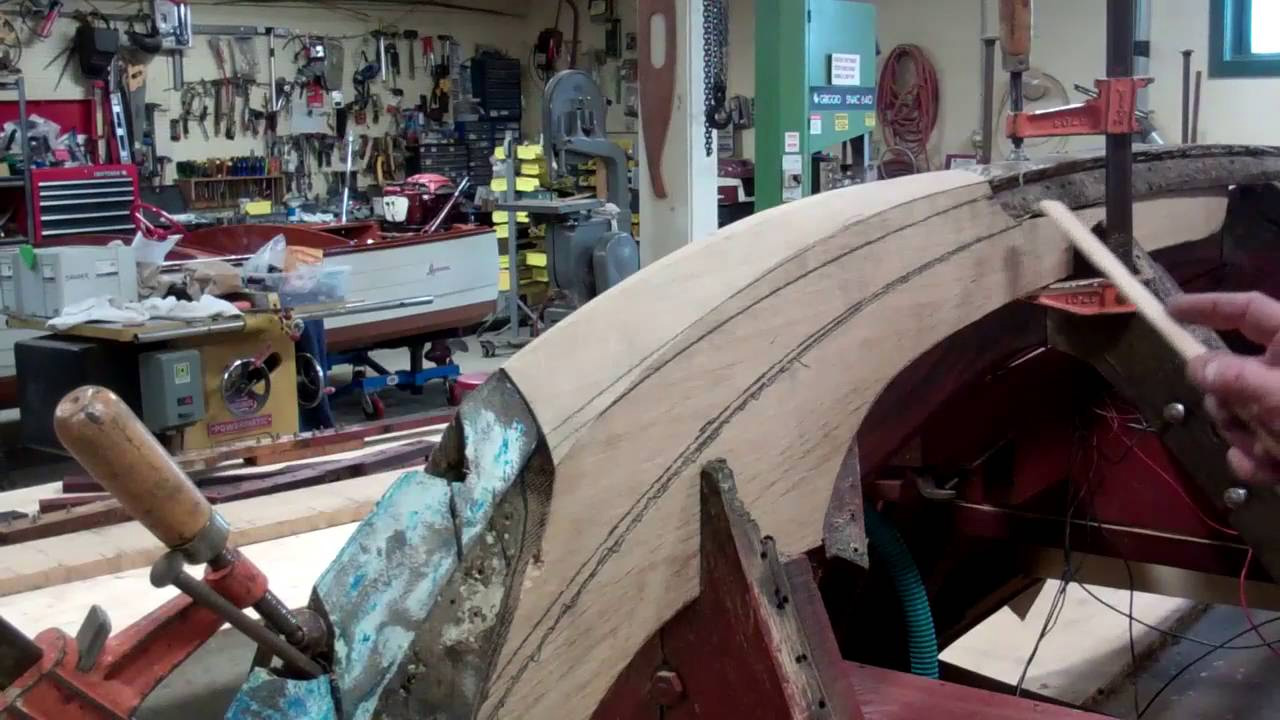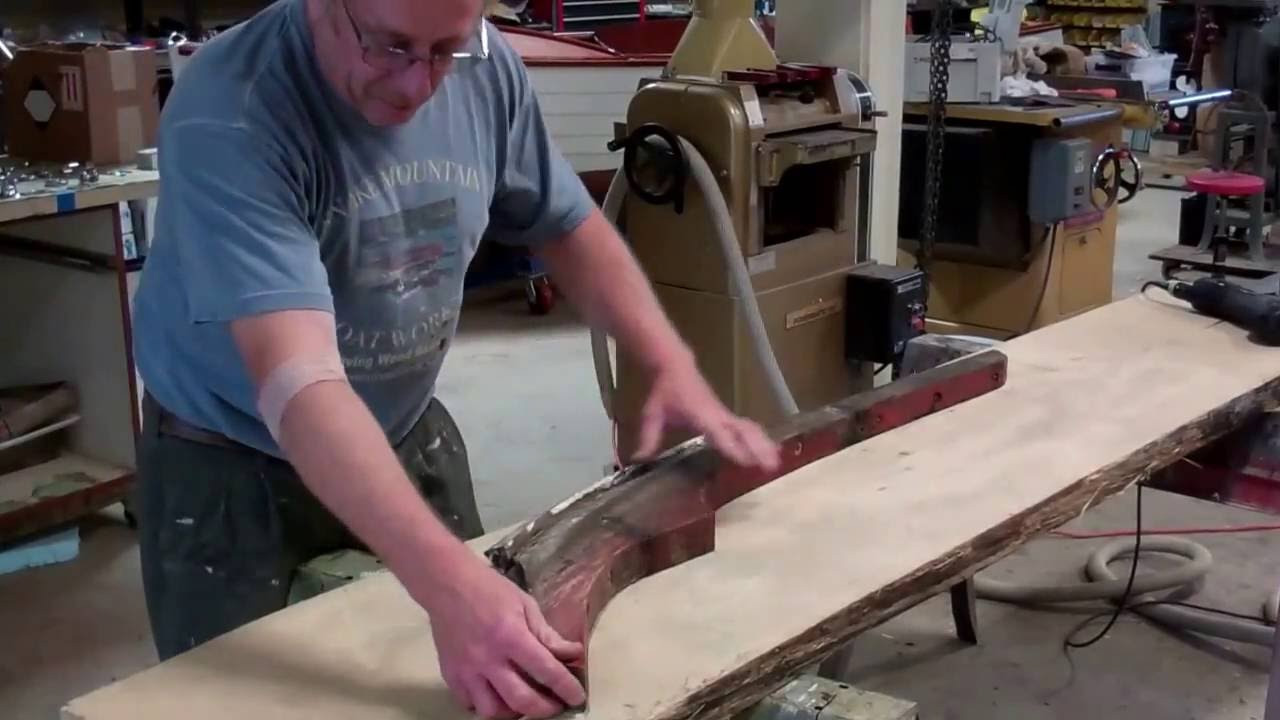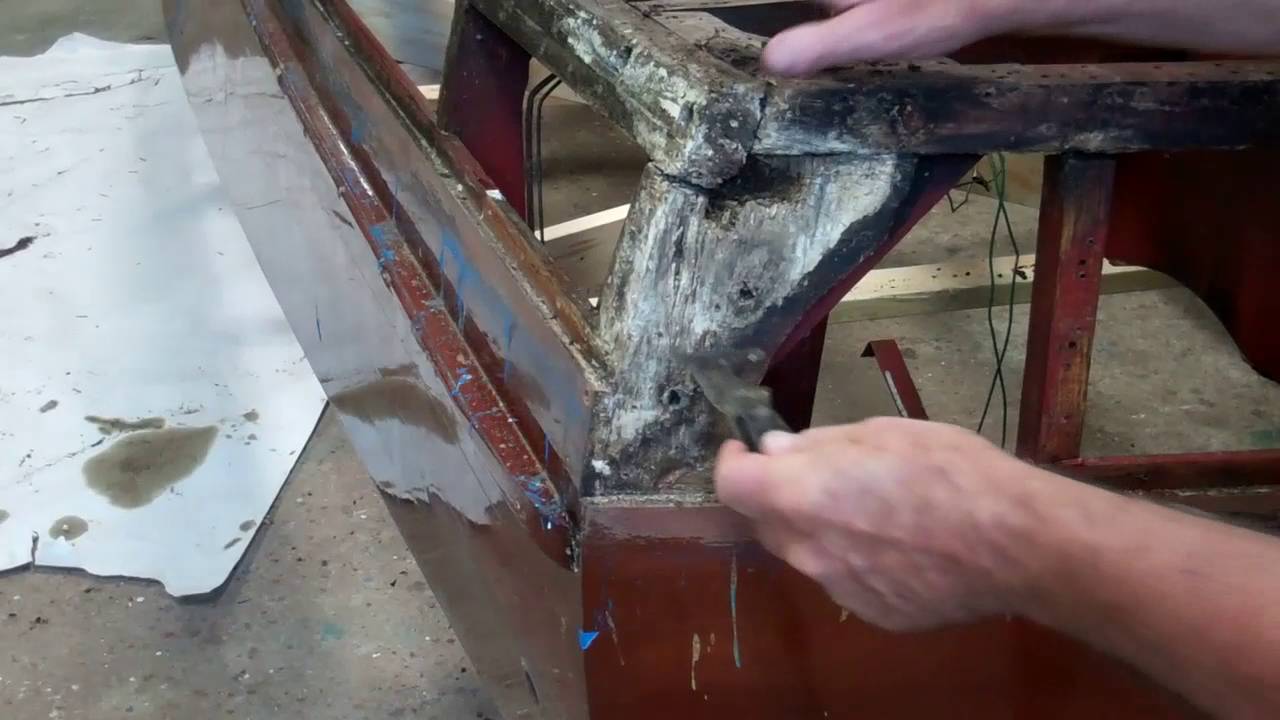Reassembly is fully under way today. The half dozen new frames and about a dozen backing blocks are fabricated, sealed with multiple coats of CPES and painted with Sandusky Chris-Craft Mahogany Bilge Paint.
John began the final fitting and installing process this morning.
Save for the sister on the forward, starboard frame, which was affixed with Jamestown Distributors Thixo two-part epoxy, the mating surfaces of each frame are “frosted” with 3M5200 before being set in place one more time and screwed home with silicon bronze wood screws.
Notice in the clip how John repeatedly drives each screw in a ways and then backs it out a bit before driving it further until it is fully seated in its countersink.
Why? White oak is much tougher than silicon bronze. Driving the screw home in one pass, even with the pilot hole in place, risks twisting and breaking the screw.
He will continue from bow to stern, and once all the frames are in place, screwed together and bolted down with silicon bronze carriage bolts, the keel will be installed.
Once again, each landing between the frames and the keel will be coated with 3M5200. Why not the Thixo epoxy? Wood hulls move. Epoxy does not. Using epoxy in this application almost surely guarantees that the joint will fracture. 3M5200, by contrast, retains sufficient flexibility when cured to deal with the movement while remaining completely secure.
Plywood is now clearly in sight!

